6 Best Compound Pull Exercises (with Pictures!)
Exercises may be classified as either push or pull.
Pull exercises are muscle-shortening actions used in strength training that bring two limbs closer together, as in a bicep curl, as opposed to push exercises that involve lengthening the limb, as with tricep extensions.
Although those cited exercises are categorized as isolation exercises, the muscles that work together to produce push-pull movements can be trained concurrently through the use of compound exercises.
Compound pull exercises are those that primarily target the elbow flexors and back muscles; Exercises that work these muscles simultaneously include dumbbell pullovers, lat pulldowns, pull-ups, and seated cable rows, among others.
Types of Compound Exercises
Compound exercises are exercises that work multiple muscle groups at the same time. These exercises synchronously fire multiple muscles to produce multiple joint movements.
Compound exercises are divided to categorize the movement and the muscles that are engaged when doing the exercises.
Compound Pull
Compound pull exercises involve the upper extremities and produce pulling motions such as pull-ups, rowing, and the like.
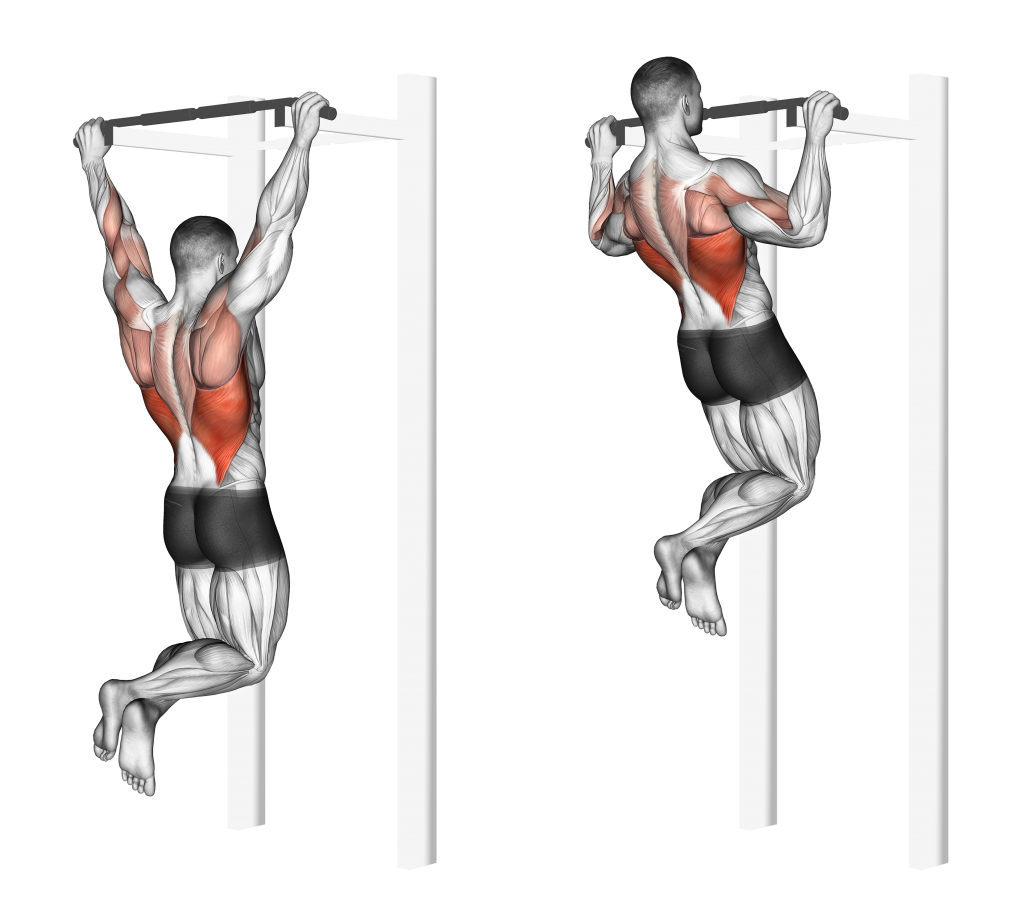
The movements commonly associated with compound pull exercises are those of elbow flexion, shoulder extension, adduction and horizontal abduction, and scapular retraction and/or depression.
Compound Push
Exercises that involve multiple muscle groups from the upper torso and extremities to provide pushing motions such as chest presses, push-ups, and dips are considered compound push exercises.
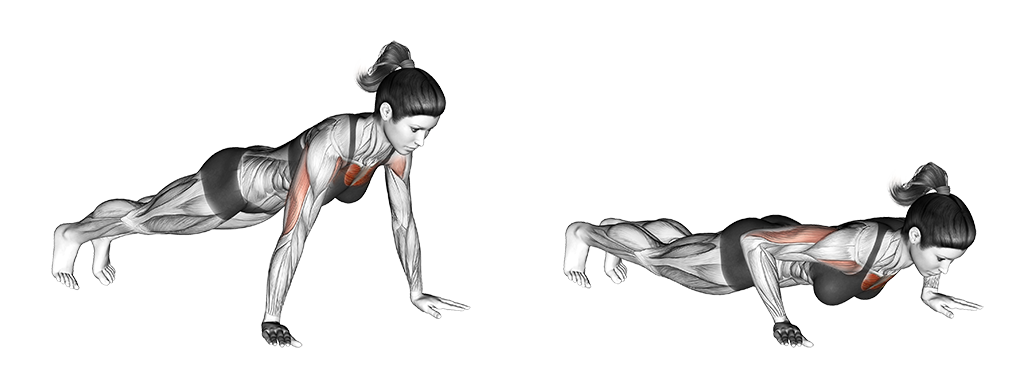
These exercises require some of the following movements to be done simultaneously: elbow extension, shoulder flexion, abduction, or horizontal adduction, and scapular protraction and/or elevation.
Compound Leg
Compound leg exercises, from the name itself, are compound exercises that involve the leg muscles. From squats to deadlifts, these exercises employ muscles of the lower extremities to perform such exercises thereby strengthening the respective muscles.
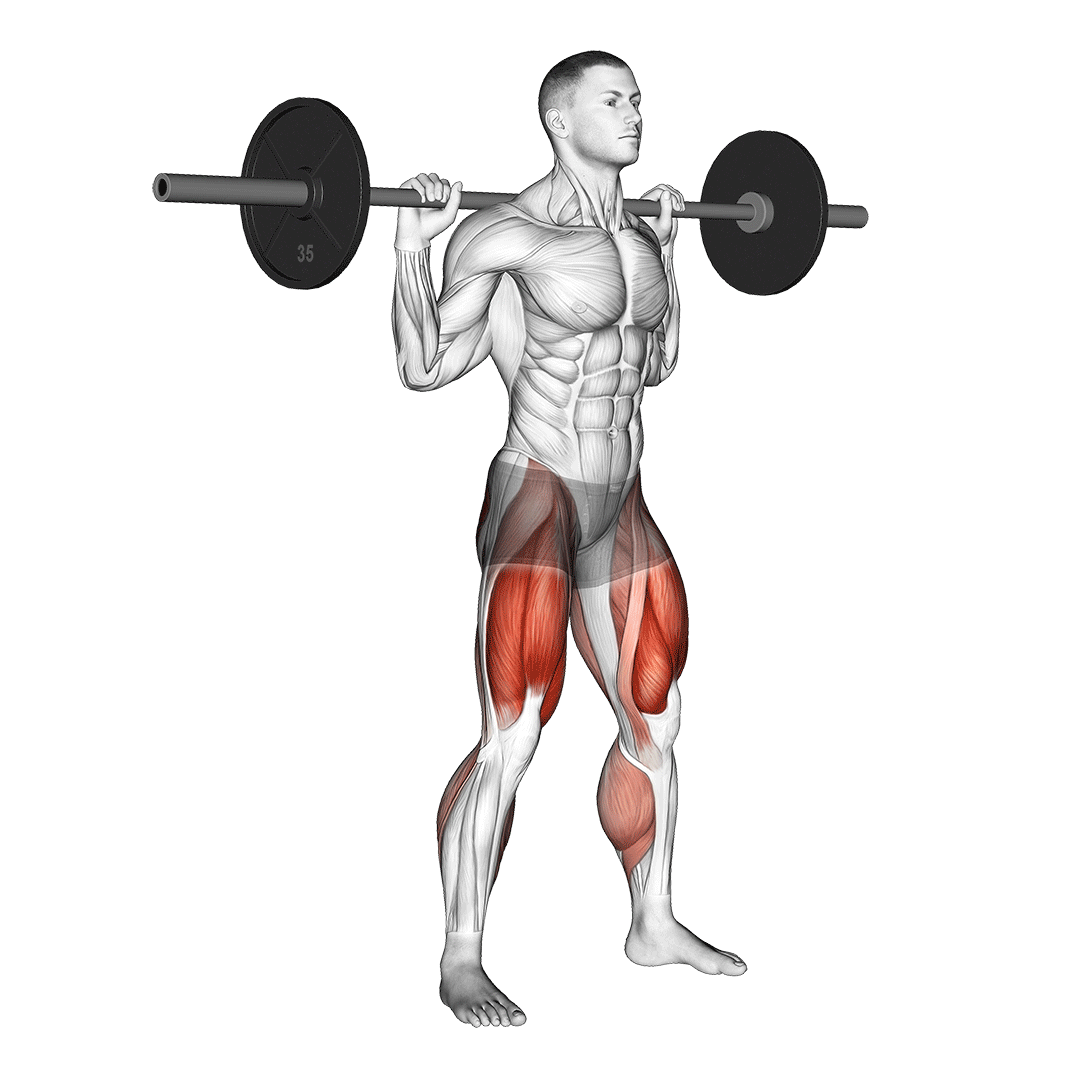
Muscles Engaged in Compound Pull Exercises
The muscle groups engaged in compound pull exercises are the same muscles used in pulling activities such as the elbow flexors, shoulder extensors, shoulder adductors, horizontal abductors, scapular retractors, and back extensors.
Elbow Flexors
The elbow flexors are a vital part of any pulling activity. These are the muscles responsible for bending the elbow to bring the hands toward the torso. Three muscles flex the elbow, namely: the biceps brachii, brachioradialis, and brachialis.
Brachialis
The brachialis muscle is the strongest elbow flexor in the absence of supination, which makes it the primary elbow flexor.
In supination, it is of lesser mechanical advantage as compared to the biceps brachii muscle. Nonetheless, it is a strong flexor of the elbow whether the forearm is in supination or pronation.
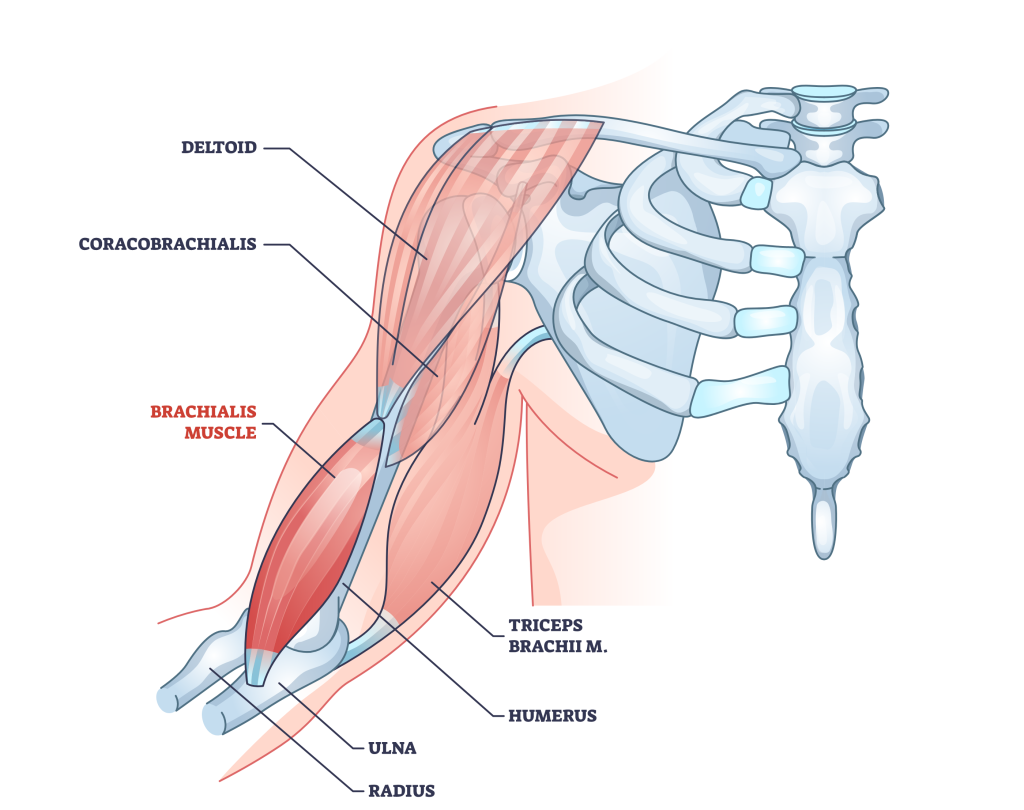
Biceps Brachii
The biceps brachii muscle lies in front of the brachialis muscle. Its two heads originate from different parts of the upper extremity, with the long head from the supraglenoid tubercle, and the short head from the coracoid process of the scapula.
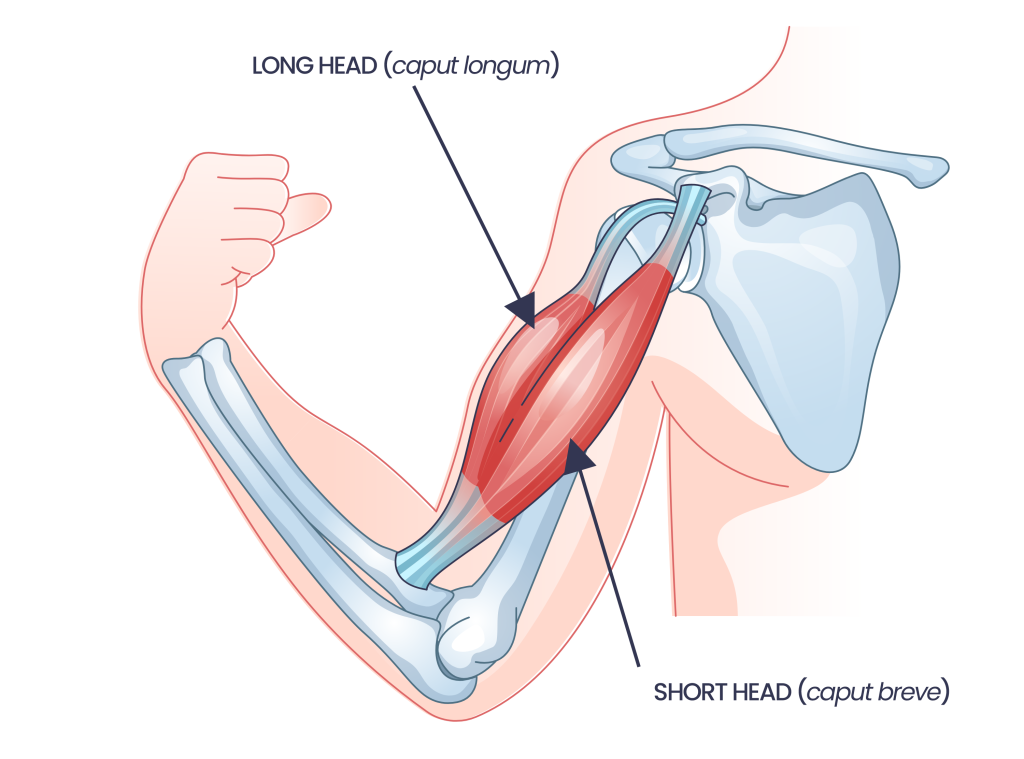
Both heads diverge to become one muscle belly and share a common insertion into the radial tuberosity and fascia of the forearm. It is the most powerful supinator of the forearm and the most powerful elbow flexor in supination.
Brachioradialis
Lastly, the brachioradialis muscle is the most superficial among the three elbow flexors. Aside from flexing the elbow, it acts to pronate or supinate the forearm, depending on the forearm position.
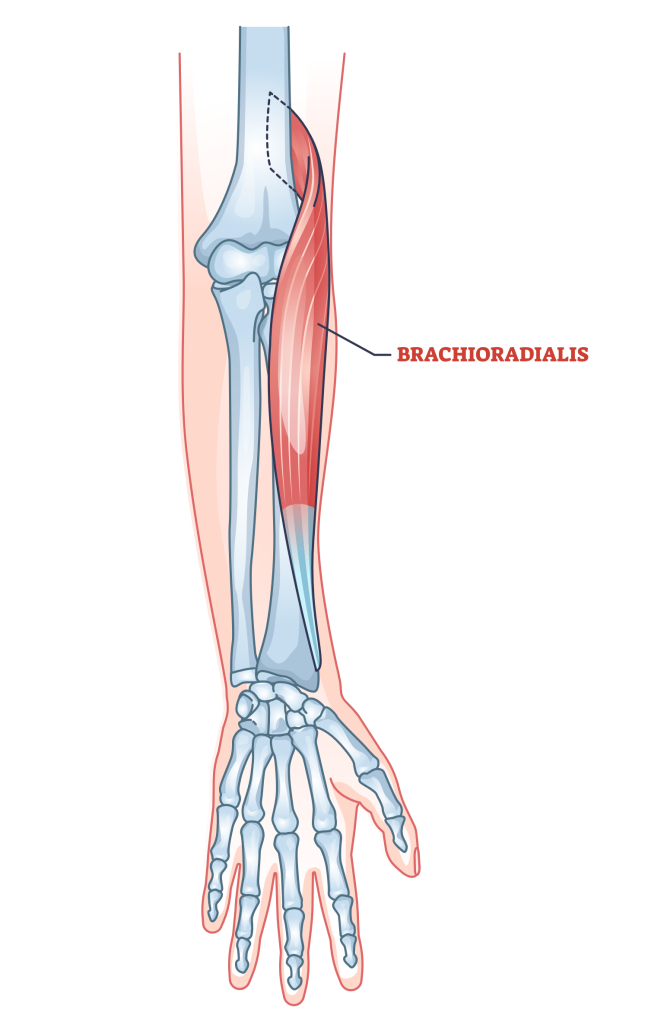
Shoulder Extensors
Shoulder extension is the movement of the arm backward relative to the anatomical position. It can also be used to describe the downward movement of the upper arm from a flexed position.
The main muscles that work to extend the shoulder are the posterior deltoid, latissimus dorsi, long head of triceps brachii, and teres major muscles.
The latissimus dorsi and posterior fibers of the deltoid both originate from the posterior part of the shoulder and act as the prime mover for this motion.
Latissimus Dorsi
The latissimus dorsi is a flat, wing-like muscle that spans the lower two-thirds of the trunk. Due to its attachments, when contracted, this muscle together with the pectoralis major and teres major can adduct, medially rotate, and extend the arm at the glenohumeral joint.
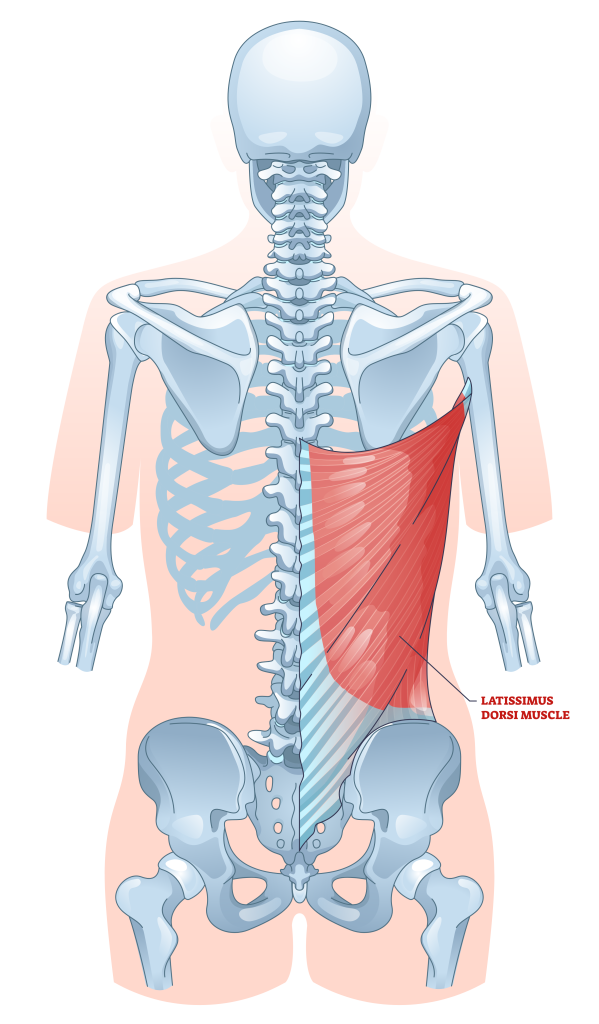
Posterior Deltoid
The posterior deltoid is the muscle that forms the back of the shoulders. This muscle originates from the scapula and inserts into the humerus and functions to extend, externally rotate, and horizontally abduct the shoulder joint.
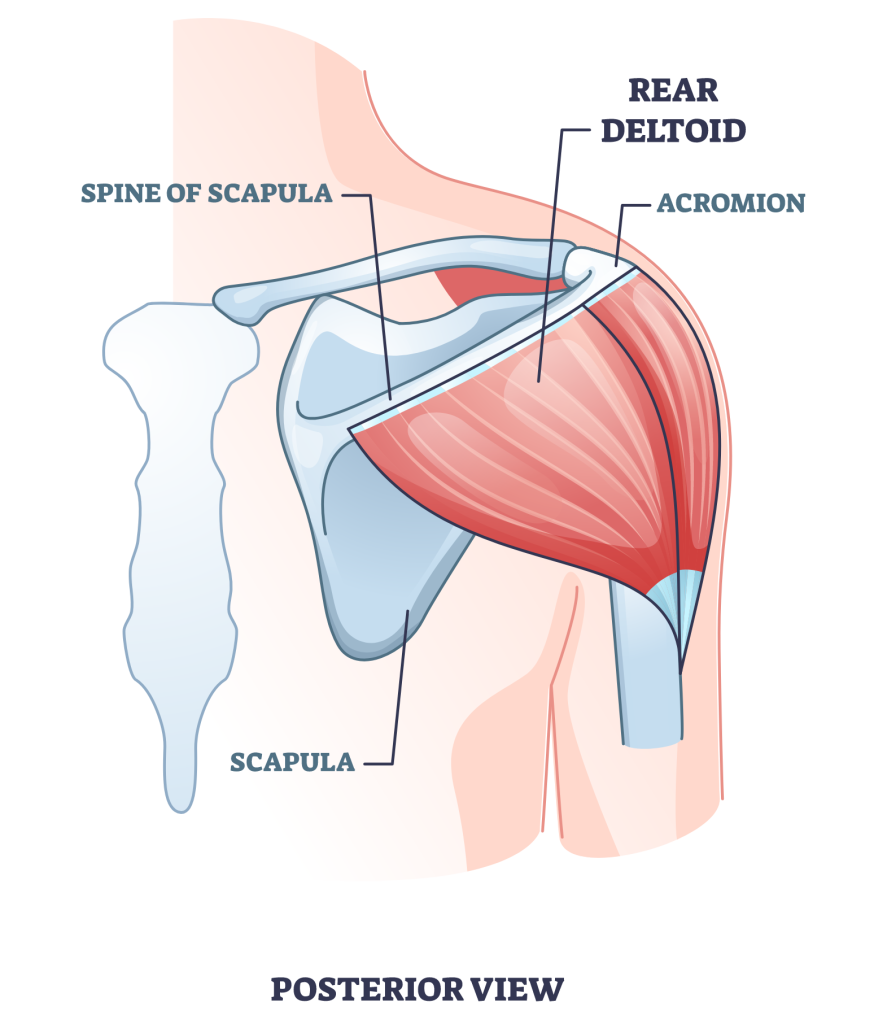
Shoulder Adductors
The shoulder adductors are a key component when it comes to compound pull exercises. It is the action of bringing the arms closer to the body through the shoulder joint.
This movement is primarily done by the pectoralis major, latissimus dorsi, teres major, triceps, and coracobrachialis muscles.
Pectoralis Major
The pectoralis major is a fan-shaped muscle that originates from 3 landmarks namely the clavicular, sternocostal, and abdominal part, and inserts into the humerus. This muscle is responsible for multiple actions such as arm adduction, internal rotation, flexion, and extension.
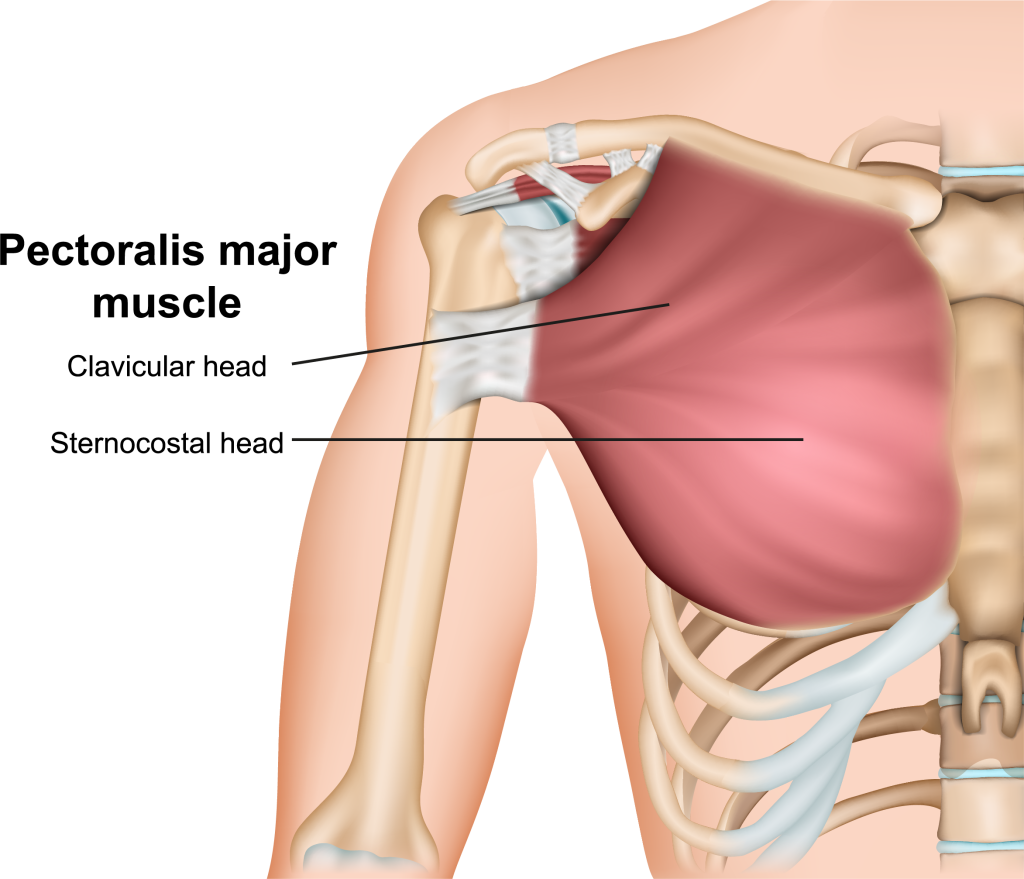
Teres Major
The teres major is a muscle that is positioned above the latissimus dorsi muscle and works together with other muscles around it to adduct the arm at the shoulder joint and is also capable of internal rotation, and extension of the humerus from a flexed position.
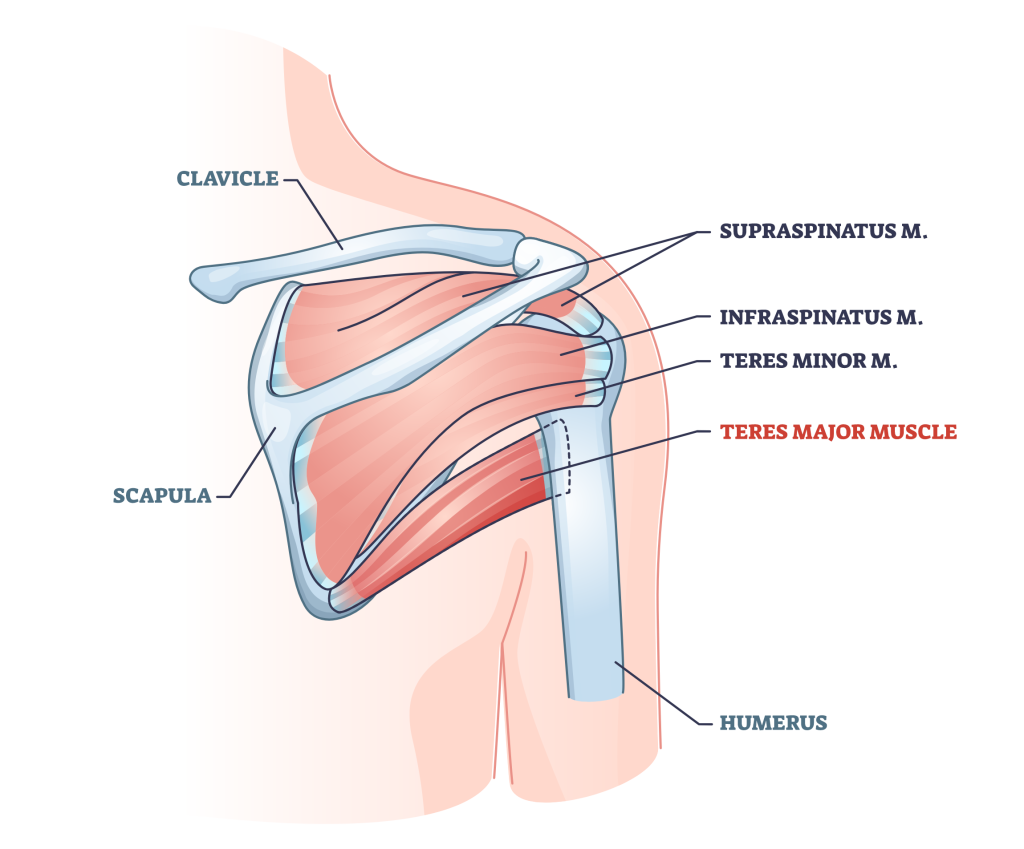
Long Head of the Triceps
The triceps gets its name as it has three muscle heads. The triceps is comprised of the long head, medial head, and lateral head of the triceps. The long head of the triceps is what is responsible for arm adduction as well as extension, due to its attachment to the scapula.
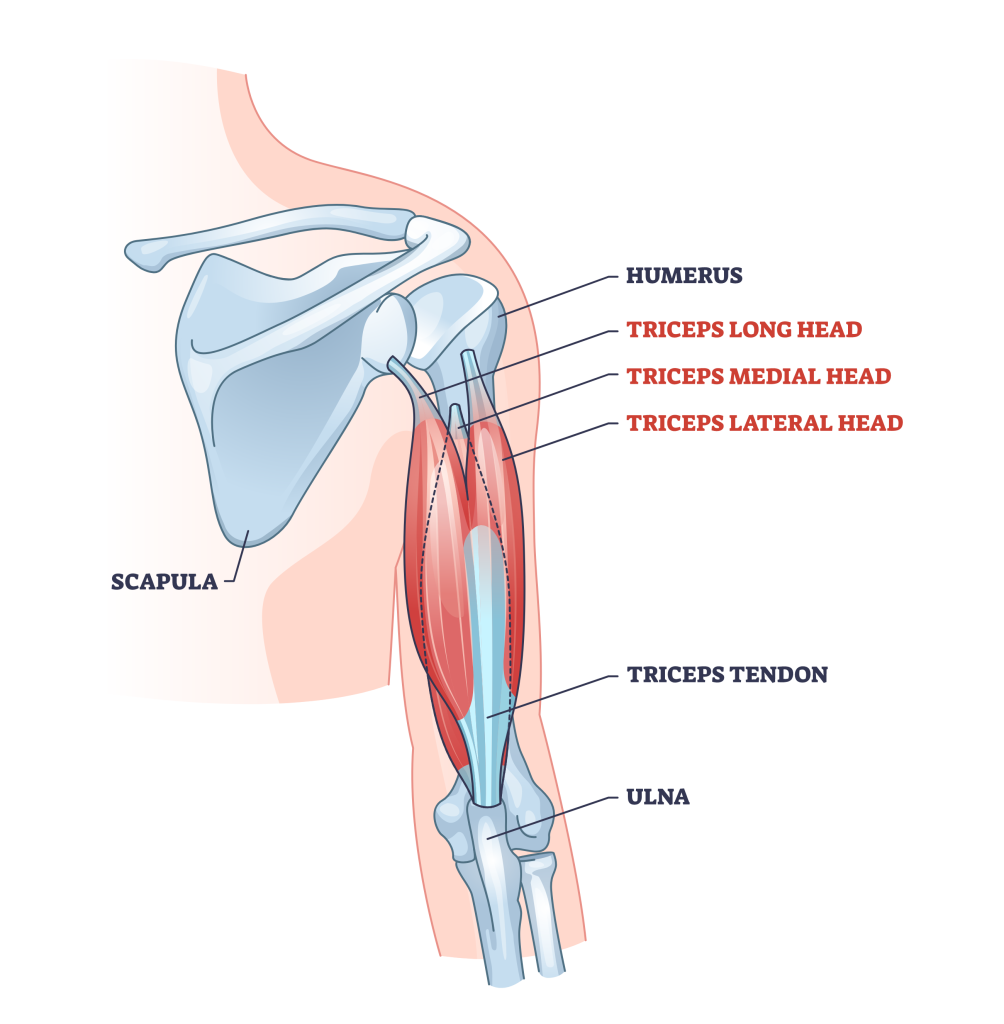
Coracobrachialis
The coracobrachialis muscle gets its name from its point of origin and insertion which are the coracoid process and the brachial region combined together. The main function of this muscle is to flex and adduct the arm at the shoulder joint.
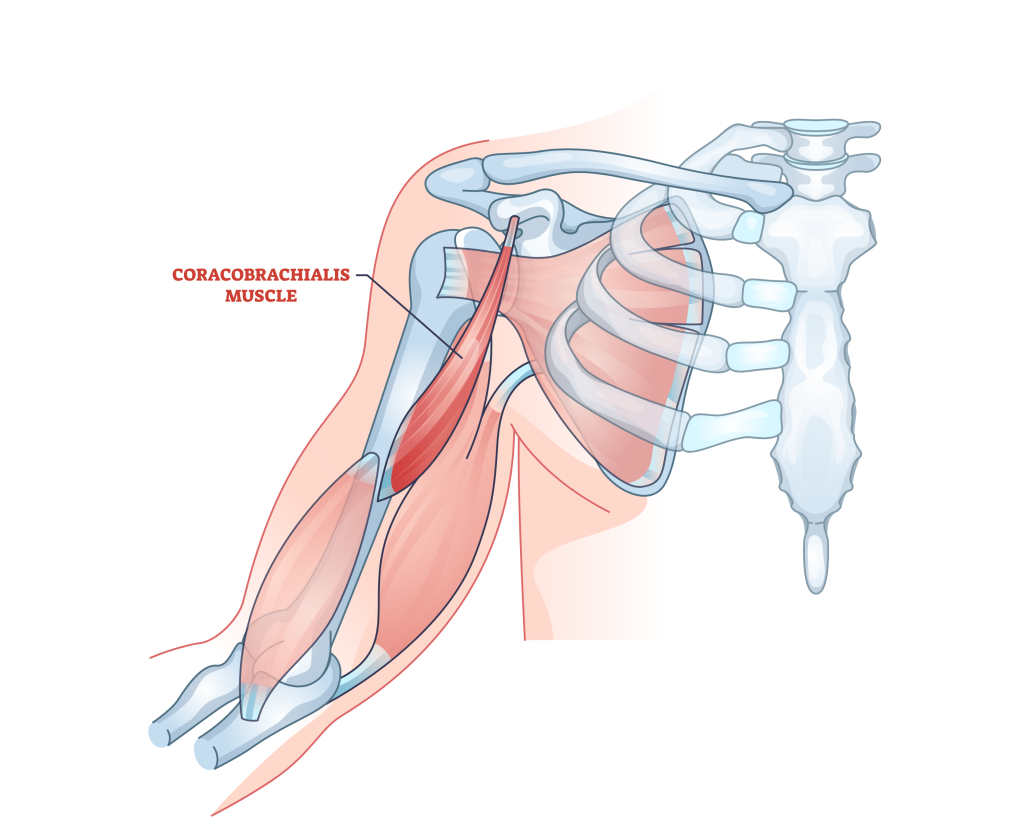
Horizontal Abductors
Horizontal abduction refers to the movement of the upper arm away from the midline of the body in a horizontal manner. It is also known as horizontal extension or transverse abduction as its movement occurs in the transverse plane.
This motion is possible not only through the muscles that attach directly to the humerus but also with the muscles that act to retract the scapula as well. The muscles responsible for this motion are the middle and lower trapezius, posterior deltoid, rotator cuff muscles, and rhomboids major and minor.
Middle and Lower Trapezius
The trapezius is a pair of large, triangular muscles located at the upper back and is divided into three parts: upper, middle, and lower trapezius.
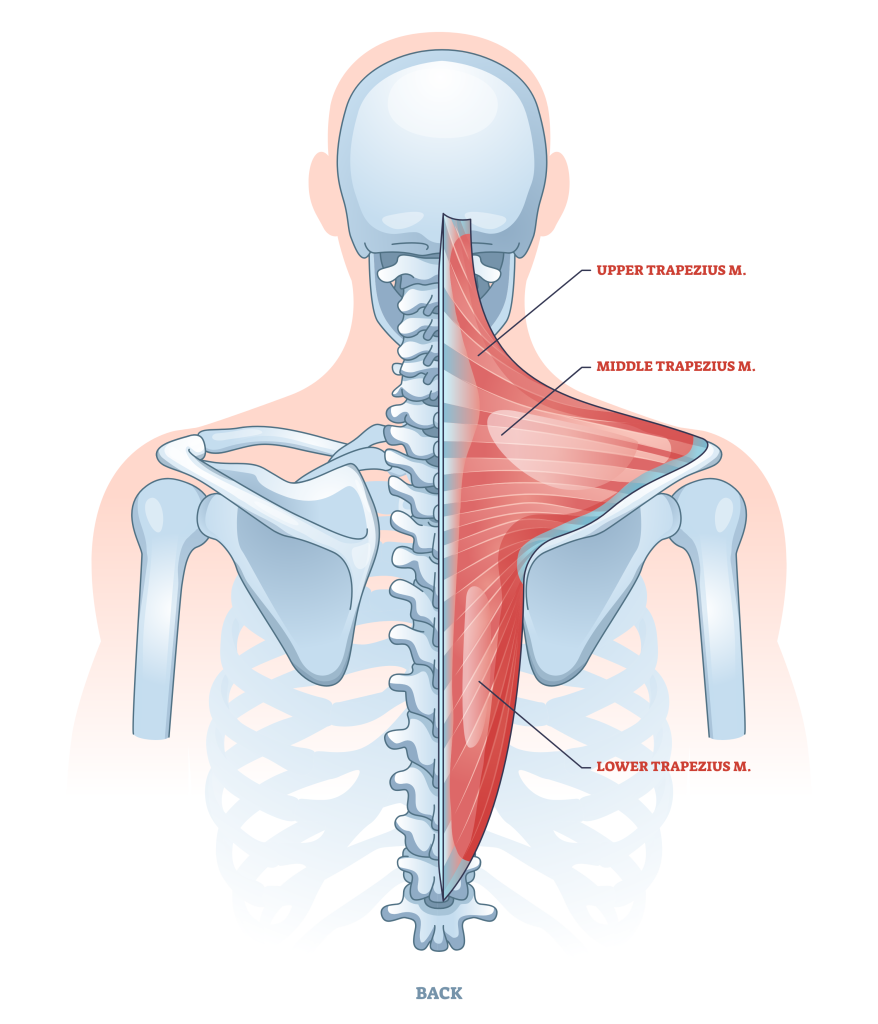
The middle fibers act to retract/adduct (to pull towards the midline) the scapula, and the lower fibers depress and medially rotate the scapula.
Rotator Cuff Muscles
The rotator cuff muscles, which consist of the supraspinatus, infraspinatus, teres minor, and subscapularis act as dynamic stabilizers of the shoulder joint.
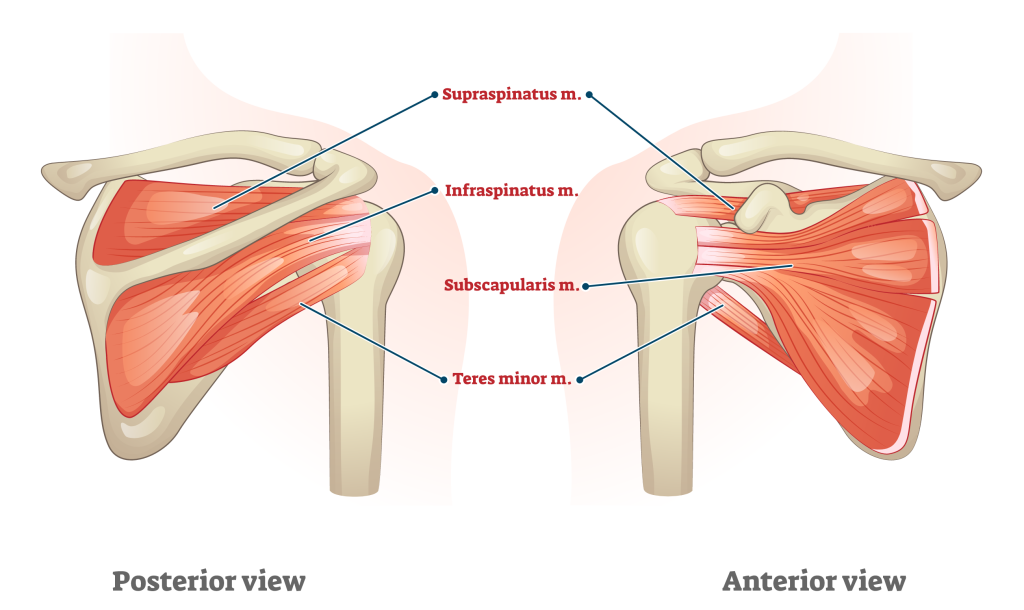
The infraspinatus and teres minor externally rotate the arm at the shoulder joint and aid in shoulder extension.
The supraspinatus, on the other hand, produces shoulder abduction. The subscapularis aids to adduct the arm at the shoulder joint and is the only internal rotator of these four muscles.
In horizontal abduction, these muscles work together as the arm moves across the range they are most active.
Rhomboid Major and Minor
The rhomboid group is situated beneath the trapezius and functions to aid in shoulder movement and scapular stability. Its main action is to retract the scapula, but it also elevates and rotates the scapula upward.
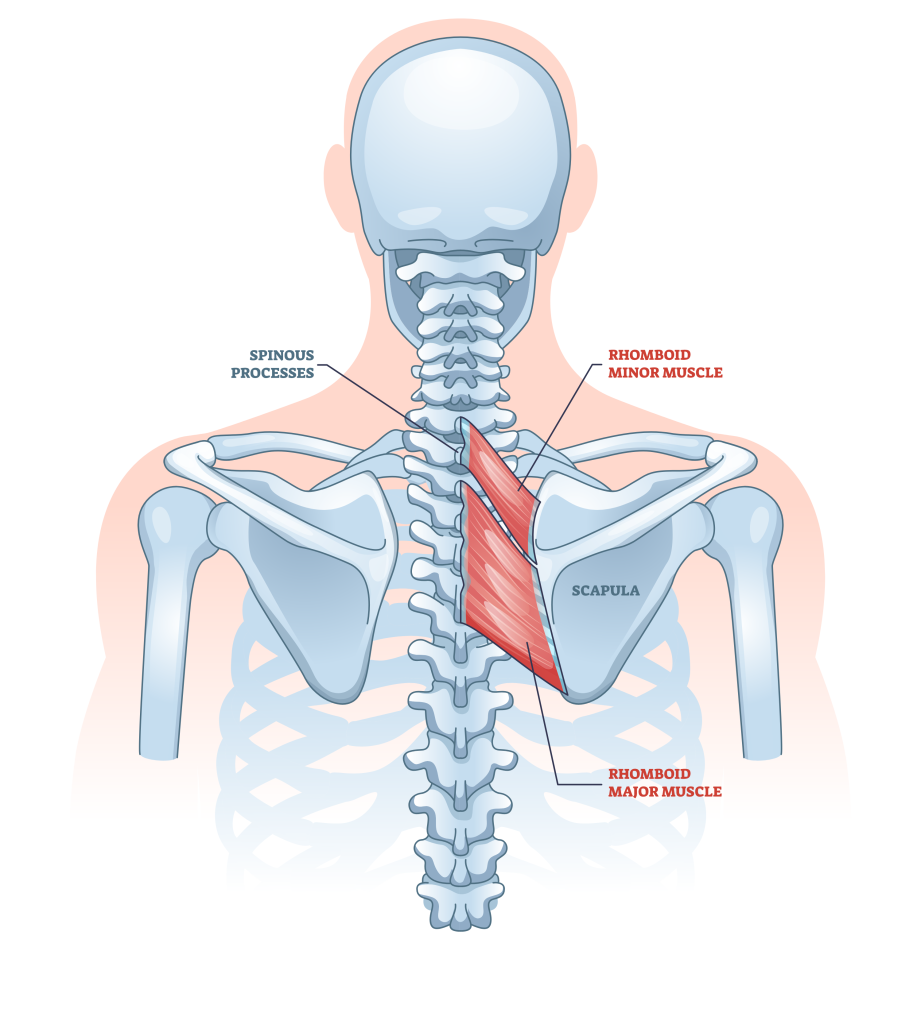
Back Extensors
The back extensors are essential to pulling activities as they are responsible for extending the spine to go into an upright position. Back extension is mainly acted upon by the erector spinae which is composed of the iliocostalis, longissimus, and spinalis muscles.
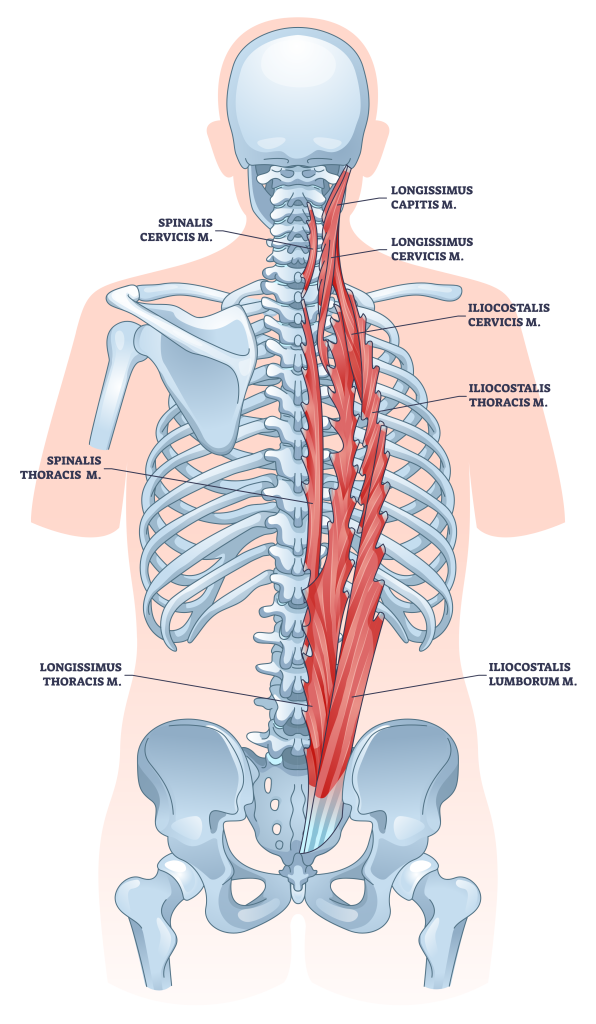
These muscles span the entire vertebral column. Bilateral contraction of the erector spinae extends the spine but laterally flexes the spine with a unilateral contraction.
Compound Pull Exercises
1. Dumbbell Pullover
Dumbbell pullovers are great compound pull exercises, the pecs are the main muscles that this exercise targets, additionally the lats, teres major, triceps, and anterior deltoids also play a part in the execution.
The wrist flexors may also be activated, depending on the grip that is used on the dumbbells.
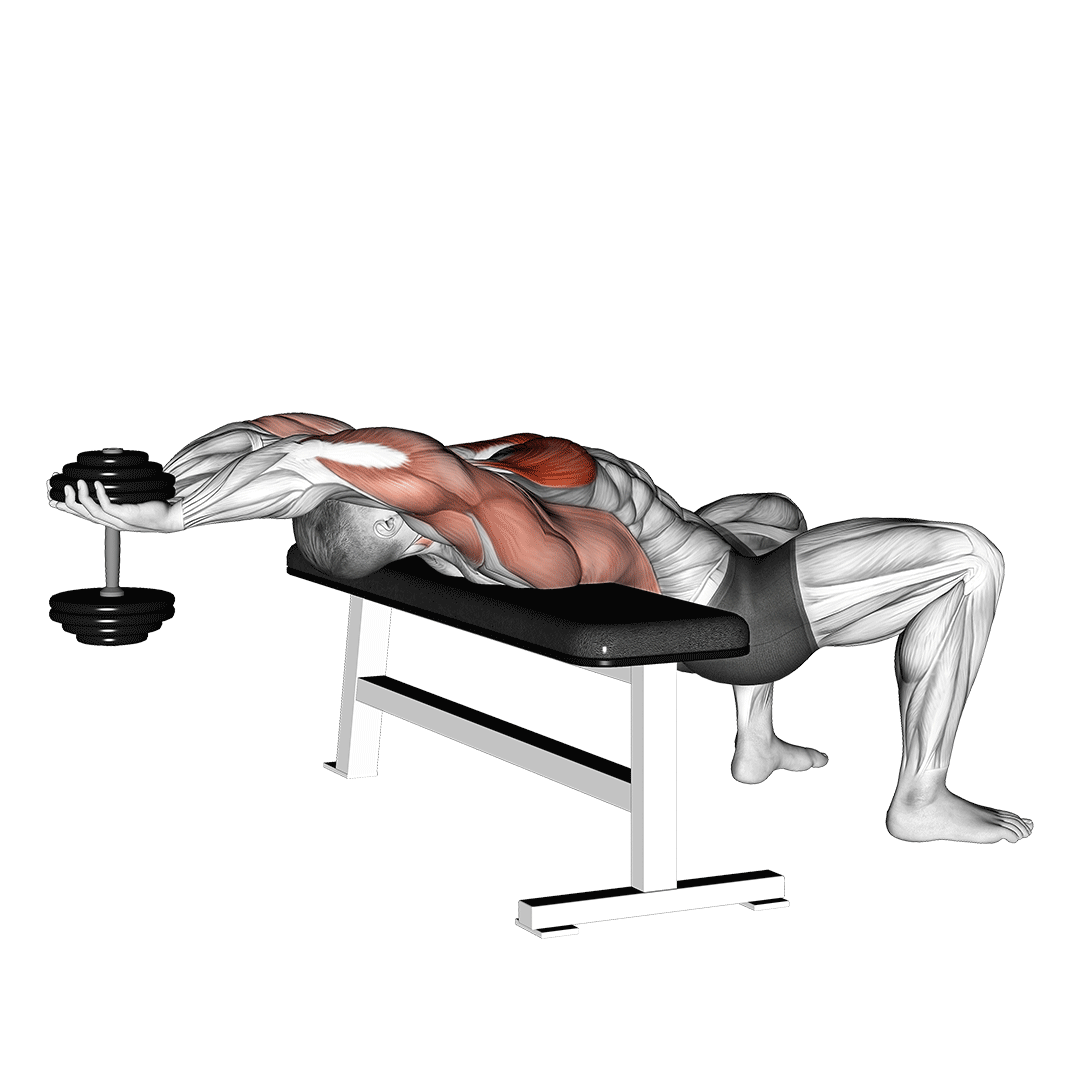
To perform this exercise, lie down crossway on a bench forming a tabletop position. Grab the dumbbell with both hands place it right over the body, lower the weight down behind the head, and then pull it back into the starting position.
Take note that the hips should be lower than the upper body through the whole motion to gain even more stretch on the upper body segments.
Repeat this motion for the desired number of reps to complete a single set.
2. Lat Pulldowns
The lat pulldown is best done on a machine and it works multiple muscles such as the latissimus dorsi, biceps, rear delts, rhomboids, and traps. This exercise helps develop overall strength in an individual’s back muscles.
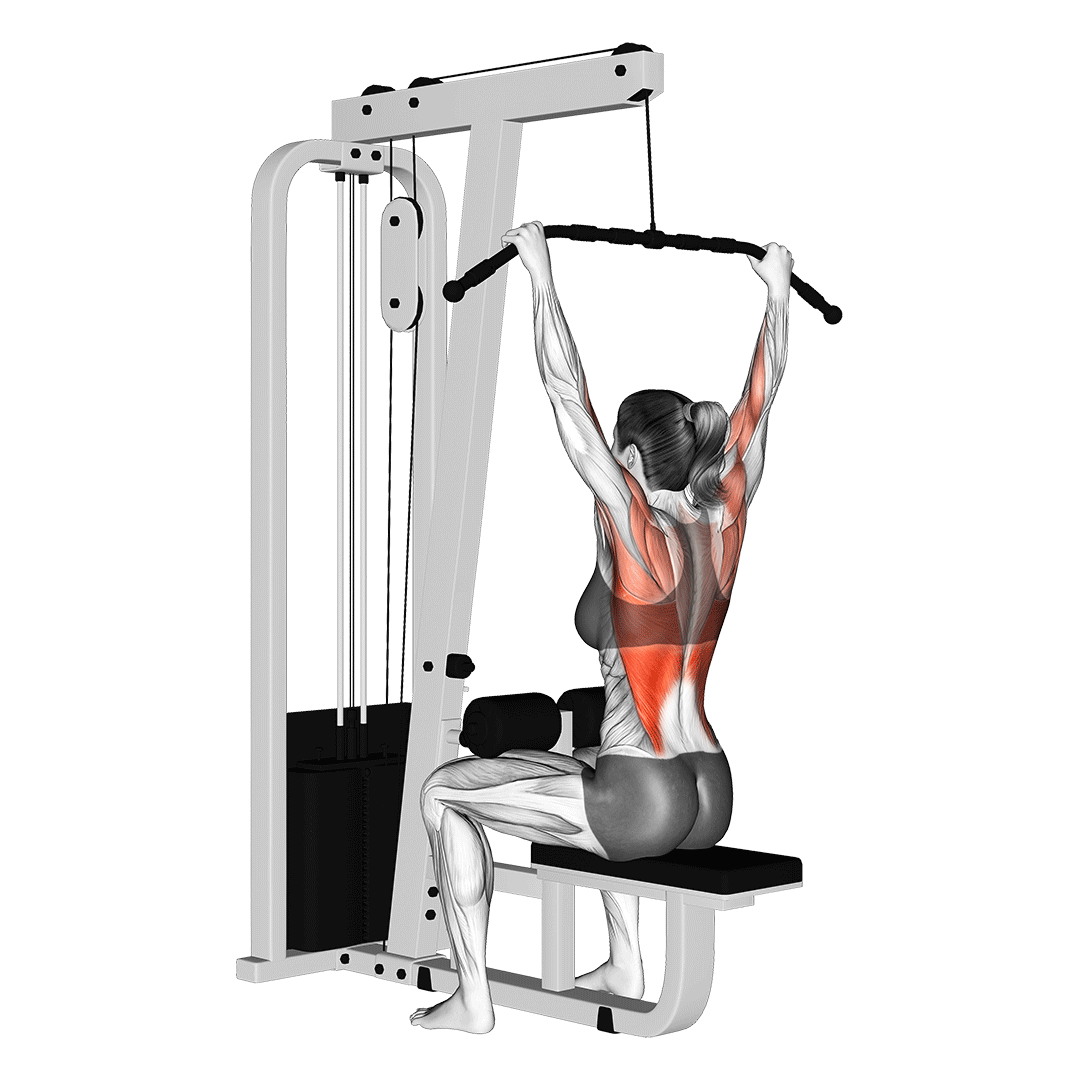
When performing the lat pulldown it is first important to take note that the lower back must not swing when pulling the handle of the machine.
The proper position for this activity is to lean back slightly and keep that form for the entirety of the workout.
To perform this exercise, sit down on the machine inserting both legs beneath the pads of the machine.
Grab the handle with a neutral grip where the palms are facing front at a wider than shoulder-width grip, then slightly lean back and engage the core. Pull the bar down as low as possible or until it almost touches the chest.
In a controlled manner slowly retract the bar again and repeat the motion for the desired number of reps to complete a single set.
3. Pull-ups
The pull-up is a great calisthenic exercise to train an individual’s upper body strength. This exercise specifically targets the lats and the biceps, while also activating the deltoids, rhomboids, and core muscles.

To perform pull-ups, start by standing below a pull-up bar then grab the bar at about shoulder-width distance with a neutral grip wherein the palms of the hands are facing in front of the body. Squeeze the shoulders together and keep the head high.
Pull the body upwards by pulling on the bar through the bending of the elbows.
To complete a single rep the chin must pass above the bar of the pull-up bar. Then slowly lower down the body in a controlled manner by letting the elbows extend.
4. Seated Cable Rows
The seated cable row exercise primarily works the latissimus dorsi and the rhomboid muscle, but the biceps and trapezius are also activated during the movement to assist in the movement. This exercise is best done on the seated machine row or the seated pulley row.
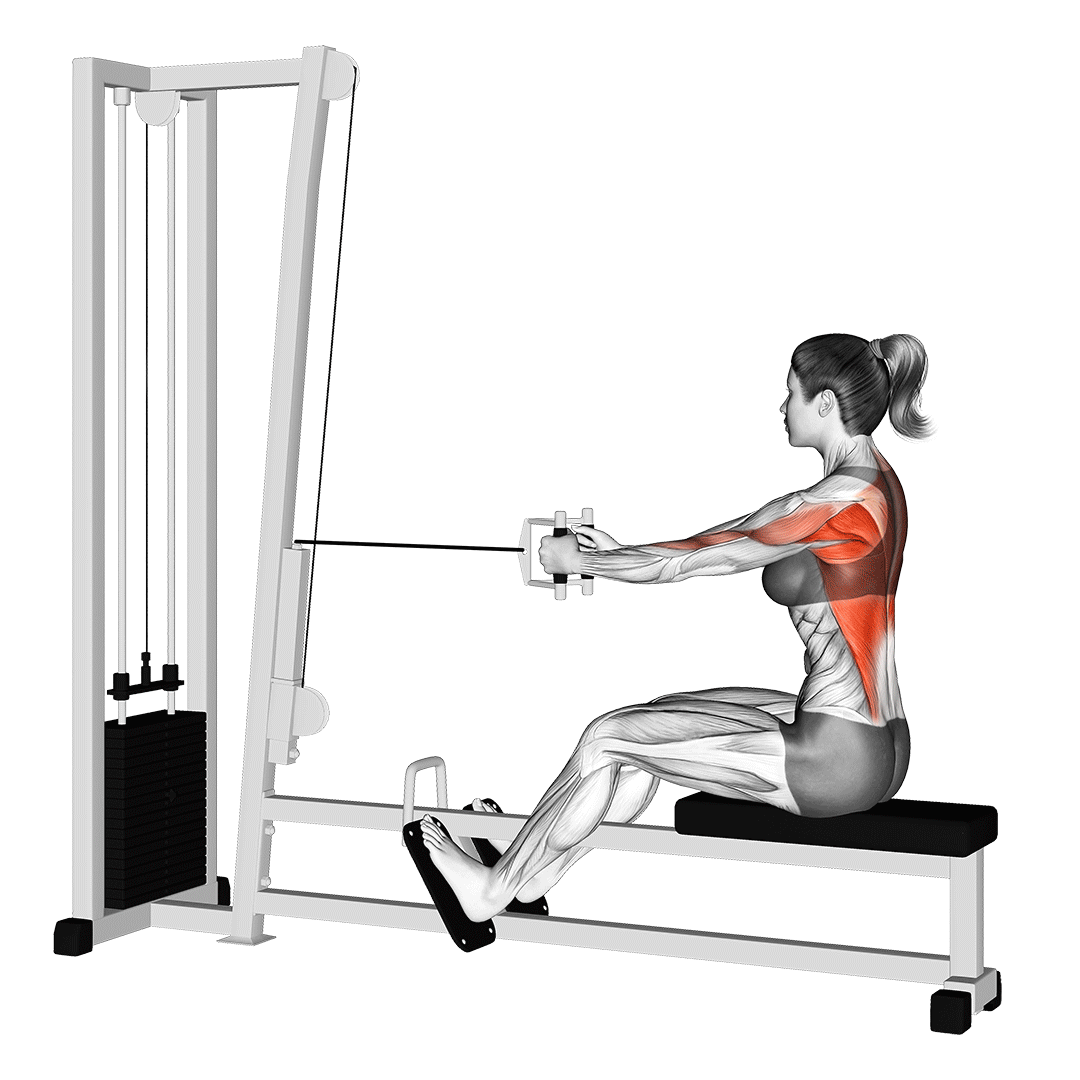
To perform this exercise, attach a close grip bar on the machine to allow the hands to be close together when gripping it. Then, take a seat on the machine and place the feet on the footplates on each side.
Grab the handles wherein both palms are facing each other and the arms straight.
Push out with the feet by extending the knees just until there is still a slight bend on the knees and maintain a neutral spine. Make sure that the shoulders are down and the chest is out.
Pull the handles towards the torso and briefly hold this position. In a controlled manner slowly return the arms to an extended position.
5. Barbell Row
The barbell upright row strengthens the lateral deltoids and trapezius muscles.
Barbell upright rows can be performed in two ways, depending on whether the grip is narrow or wide. The narrow grip focuses on the trapezius, whereas the wider grip focuses on the entire shoulder.
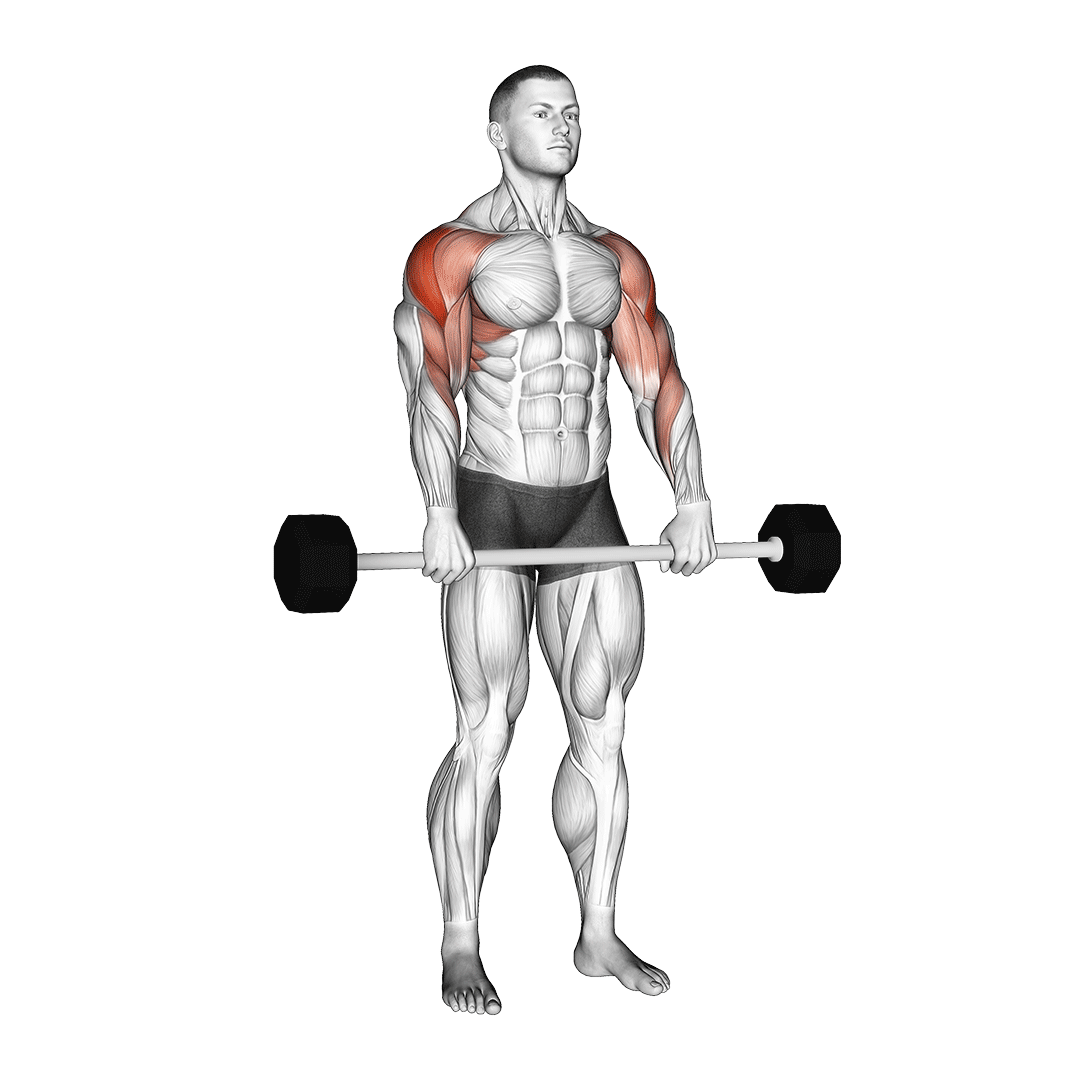
To perform this exercise, the person stands with their feet shoulder-width apart. Grab a barbell with a wide overhand grip and hang it in front of the individual.
Then lift the barbell until it reaches near the chin using the arms and elevating the shoulders. It should be noted to avoid gaining momentum from the legs by hopping to lift the weights. Then slowly lower the barbell back to its original position; this is one rep.
6. Bent Over Rows
The bent-over row is one of the best back exercises, but it's also one of the most difficult.
The latissimus dorsi, posterior deltoid, scapular retractors, specifically the lower and middle trapezius, and rhomboids are all worked out during this exercise.
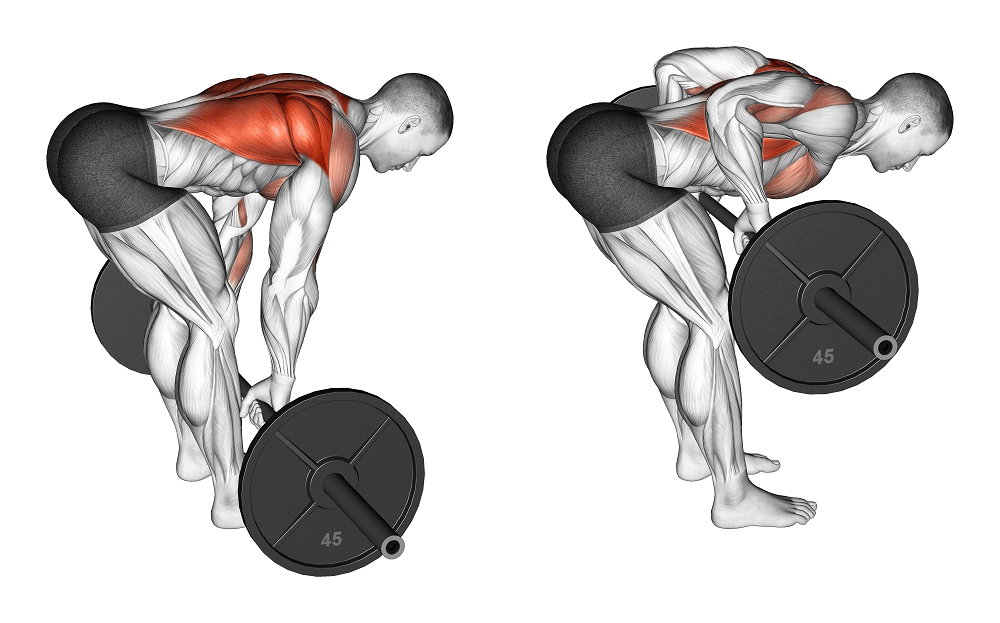
Position behind the barbell. Stand with the feet shoulder-width apart and hold the barbell with the palms facing the body.
While holding the barbell, the arms must be straight. Bend the knees slightly, then bend the torso until the upper body is parallel to the floor.
Lift the barbell by bending at the elbows, and ensure that the elbows stay close to the body at all times.
Squeeze the back muscles once the barbell has been fully lifted and hold the position for a brief pause before lowering it down again.
Final Thoughts
Compound pull exercises are excellent in training the muscles employed when performing pulling motions, which may be beneficial in daily activities such as lifting.
By categorizing exercises into push or pull, you train the upper body muscles used for pushing one day, and the upper body muscles used for pulling the next.
References
1. Jeno SH, Varacallo M. Anatomy, Back, Latissimus Dorsi. [Updated 2022 Apr 5]. In: StatPearls [Internet]. Treasure Island (FL): StatPearls Publishing; 2022 Jan-. Available from: https://www.ncbi.nlm.nih.gov/books/NBK448120/
2. Plantz MA, Bordoni B. Anatomy, Shoulder and Upper Limb, Brachialis Muscle. [Updated 2022 Feb 22]. In: StatPearls [Internet]. Treasure Island (FL): StatPearls Publishing; 2022 Jan-. Available from: https://www.ncbi.nlm.nih.gov/books/NBK551630/
3. Chang LR, Anand P, Varacallo M. Anatomy, Shoulder and Upper Limb, Glenohumeral Joint. [Updated 2022 Aug 8]. In: StatPearls [Internet]. Treasure Island (FL): StatPearls Publishing; 2022 Jan-. Available from: https://www.ncbi.nlm.nih.gov/books/NBK537018/
4. Lung BE, Ekblad J, Bisogno M. Anatomy, Shoulder and Upper Limb, Forearm Brachioradialis Muscle. [Updated 2022 Jul 25]. In: StatPearls [Internet]. Treasure Island (FL): StatPearls Publishing; 2022 Jan-. Available from: https://www.ncbi.nlm.nih.gov/books/NBK526110/
5. Williams JM, Sinkler MA, Obremskey W. Anatomy, Shoulder and Upper Limb, Infraspinatus Muscle. [Updated 2022 Aug 8]. In: StatPearls [Internet]. Treasure Island (FL): StatPearls Publishing; 2022 Jan-. Available from: https://www.ncbi.nlm.nih.gov/books/NBK513255/
